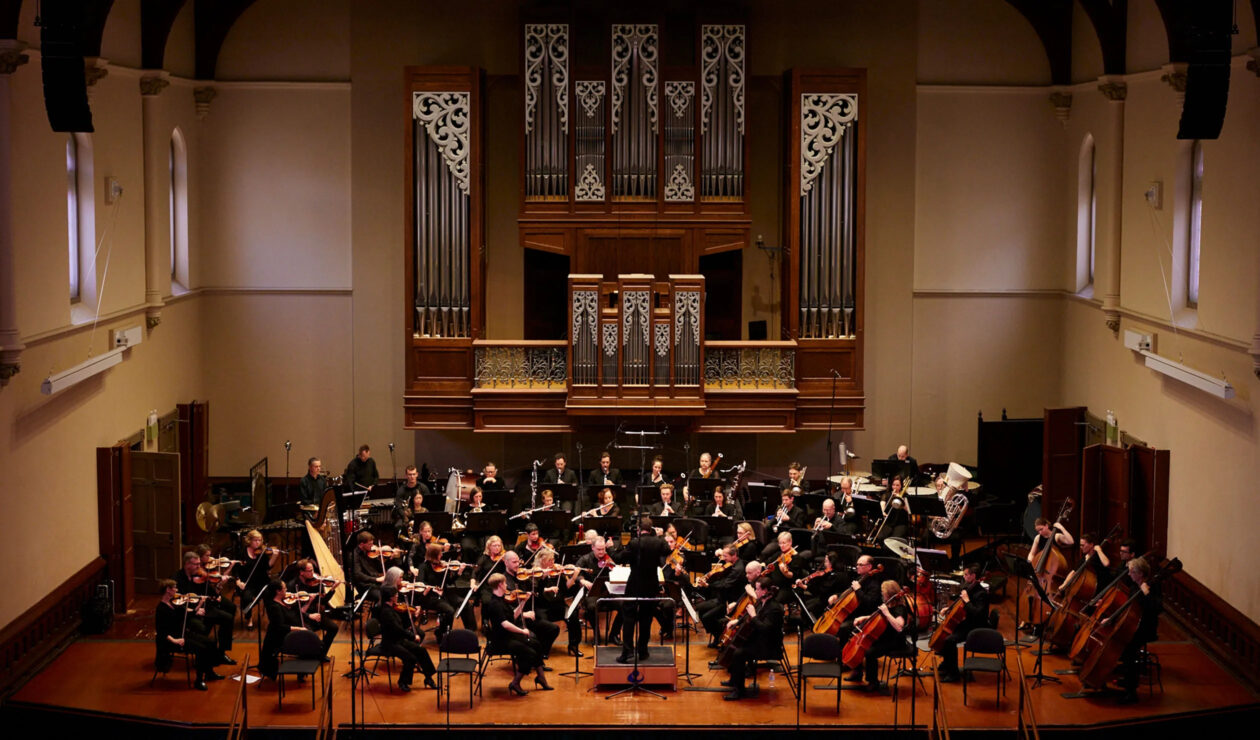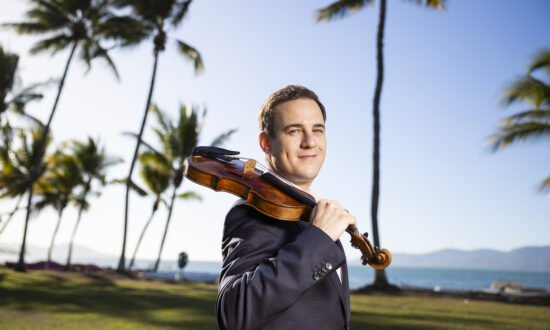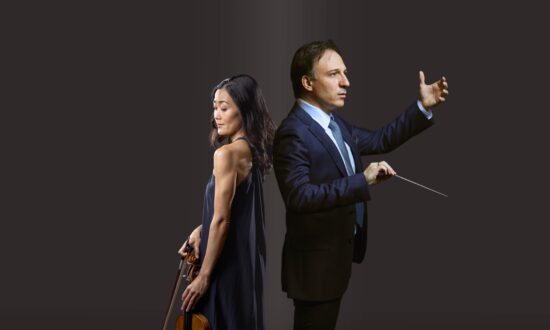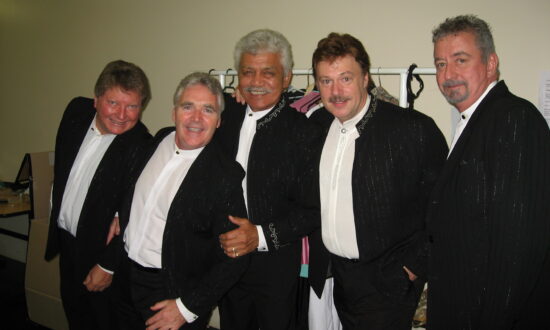Another day, another soloist. And then there is Ilya Gringolts. This Russian violinist possesses a special brand of wizardry that is completely his own, and when matched with music that suits his particularly adventurous inclinations, one has to seriously ask if there could be any other violinist on this planet who can rival his unique set of powers.
We have had Gringolts here before with the ASO, in Tchaikovsky’s Violin Concerto in 2015, but on this occasion we could witness a yet more fearlessly audacious musician who delights in evolving all his own answers. Fair to say, Prokofiev shows more of his capability than Tchaikovsky.
The Violin Concerto No.1 in D, Op.19, proved absolutely scintillating in his hands: by turns mercurial, flighty and sublime. Brought to whole new dimensions of artistry, and with a technical accomplishment that is staggering, this work seems to have found its biggest champion in the 41-year-old musician.
Gringolts started this concerto with a sweetly gentle pianissimo opening that climbed as if magically to heaven, but then jumps on its dance rhythms like he’s a pub musician. Immediately he responds with a sound that is skittish, earthy and vulgar, but at the same time executed with unassailable precision. Shafts of pathos slowly emerge as he moves towards its tranquil conclusion with trills on the instrument’s very highest notes. The effect is truly beguiling.
He technical armoury is stupendous. Swiping at low notes with savage bite, he draws out an amazingly raspy tone from his Stradivarius. In the next breath, he dispatches chains of scales with playfulness and pure cheek.
Prokofiev pushes the limits of what is attainable on the violin – this concerto regularly cited as one of the hardest for the instrument – but Gringolts surmounts all its challenges like it’s a walk in the park: he reaches up to stratospheric notes with the finest delicacy and an almost casual ease.
His calm air and absence of showmanship makes him a class act.
To have Prokofiev played with his exceptionally wide expressive colour was wonderful in itself. But this performance also gained plenty from the ASO’s strong, committed playing. Conductor Mark Wigglesworth judged the timing changes exactly right and brought his players along with confidence and nerve.
Often, a Teutonic heaviness weighs down his first concerto to some extent, but the ASO’s playing was controlled and clean.
Gringolts then offered an encore of such astonishing difficulty that it left both the audience and the ASO musicians agog. It consisted of the most rapid arpeggios superimposed by drone sounds and a melody that sounded as if two or maybe even three violinists were playing simultaneously. You had to scan across to the ASO violinists to check for sure.
Gringolts clearly belongs amongst the top of the world’s elite violinists, and it was an enormous treat to hear playing at this level.
Before this in this concert dubbed ‘Dreams’ came another treat: a new work of genuine beauty that actually had something to say – it doesn’t always happen. This was UK composer Grace-Evangeline Mason’s The Imagined Forest, here receiving its Australian premiere.
Descriptive in its nature painting and symphonic in breadth, it can fairly be described as a tone poem. It is a skillfully written, glistening score of delicacy and restraint. Solo violin plays over shimmering strings in a way that nostalgically brings to mind Vaughan Williams. However, after a restful beginning The Imagined Forest gathers a dramatic turmoil that suggests there is trouble in nature’s paradise. Kate Suthers, the ASO’s new concertmaster, played the solo part with true eloquence.
After interval, the job of regaining the first half’s intensity seemed a big ask, but the ASO managed to do just that in a wonderful performance of Sibelius’s Symphony No.1 in E minor, Op.39. It was as if the Prokofiev had lit a wick for what followed.
Back in 2007, former ASO conductor Arvo Volmer led a fine Sibelius Festival with performances that emphasised the Finnish composer’s terse outlines and cool temperament. He freed Sibelius from overly Germanic interpretations that can make his music sound like poorly written Bruckner.
Now there was also fire in his heart. Wigglesworth shares a similar picture to Volmer that brings a reassuring tautness to Sibelius, but on top of that he knows about this music’s inherent drama. After the opening bars’ soulful clarinet, he ignited the first movement passion with strident violin tremolos, startling timpani strikes and roaring main theme.
Clearly enjoying working with Wigglesworth again, the ASO played with terrific virility and compressive strength. Despite this concert’s title, there was no time to dream. All one could do was buckle up for this symphony’s expressive power and the musicians’ go-for-it attitude.
Ensemble was admirably tight, notably in the first movement’s overlaid pizzicato effects where the strings really have to be together and in time.

Get InReview in your inbox – free each Saturday. Local arts and culture – covered.
Thanks for signing up to the InReview newsletter.
Only in the hushed beauty of the slow movement could one gather one’s breath. It is as lovely as anything from Tchaikovsky, and rather similar in style.
For a smallish symphony orchestra, the ASO does especially well in the clarity of its ensemble playing. To have fat, blazing brass in this symphony was a just great too, thanks to excellent playing likewise from that department. A rousing climax in the finale with pelting timpani brought this concert to a mighty conclusion.
‘Dreams’ with Adelaide Symphony Orchestra played at Adelaide Town Hall on September 23.
Support local arts journalism
Your support will help us continue the important work of InReview in publishing free professional journalism that celebrates, interrogates and amplifies arts and culture in South Australia.
Donate Here




